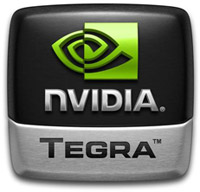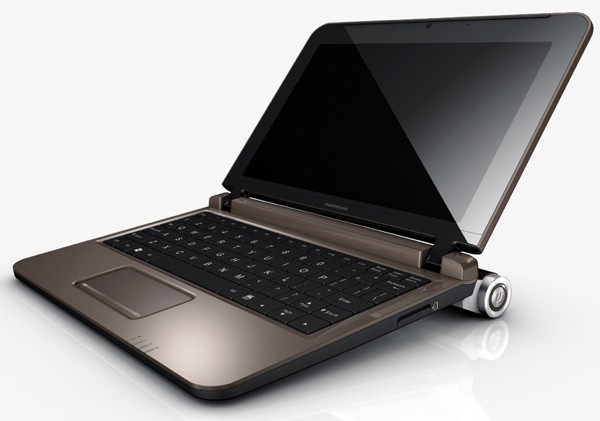Nvidia Tegra Promises 1080p Video, 25-day Music
Many of our mobile internet devices (MIDs) today are relatively underpowered. Given that the small devices are usually designed only for simple uses, they’re often of modest computational muscle. But Nvidia plans to shake things up with its Tegra chip technology.
A dozen new MIDs debuted at Computex today using Tegra, except that they weren’t quite the devices we expecting to get the Tegra-treatment. All of the Tegra-based devices were either netbooks or tablet when really, we're waiting for the technology to find its way to a PMP or cell phone.
Nvidia describes Tegra as a computer-on-a-chip with what it calls a “heterogeneous multiprocessor architecture.” A CPU runs the html and Java, an HD video processor that makes streaming HD video playback possible, and a GPU for a compelling user interface and for Flash acceleration.
Perhaps the biggest attraction of the Tegra is its computation power in relation to power draw. Nvidia advertised that Tegra devices are capable of:
- Listening to music for 25 days straight on one charge
- Watching 1080p HD video for up to 10 hours
- Playing video games at 46 frames per second
We’re impressed at the audio and music playback claims, but the variance in games makes us a little unsure about that 46 FPS claim.
At Computex are the following models already on display:
- Compal Communications, Inc. CN88 (netbook)
- ICD Ultra (tablet)
- Inventec Applications Corp. Rainbow (netbook)
- Mobinnova Mabo (tablet)
- Mobinnova ViewBook N910 (netbook)
- Pegatron Vivid (netbook)
- Wistron M5 (netbook)
Get Tom's Hardware's best news and in-depth reviews, straight to your inbox.
-
Tindytim They don't really say much about the conditions, so I don't see the point in speculating unless they plan on elaborating on the conditions that 46 frames were stated from (is that an average?).Reply
I mean, just look at the Ion platform, and what it could do, and the Atom was the bottleneck in such applications. -
apmyhr Am I missing something or did they fail to mention what battery size/type and conditions they used to come up with these numbers?Reply -
sunraycer Previous articles stated that Tegra is an ARM based IC. That means no Windows XP/Vista/7 correct? These will need to be Linux or Windows CE netbooks...Reply -
The battery is a 12V car battery. There's a backpack type accessory, not to be confused with a ghostbusters backpack.Reply
-
Gin Fushicho Usually when Nvidia mentions FPS they mean some of the higher end games like Timeshift CoD5 and the like.Reply -
Tindytim Gin FushichoUsually when Nvidia mentions FPS they mean some of the higher end games like Timeshift CoD5 and the like.All of those games are x86, this is an ARM processor.Reply
I thought they were only going to use this in phones, and other portable hand held devices (Game consoles?). I netbook seems rather silly to me. -
lamorpa "A dozen new MIDs debuted(sic) at Computex today using Tegra, except that(sic) they weren’t quite(sic) the devices we ?(sic) expecting to get the Tegra-(sic)treatment."Reply


